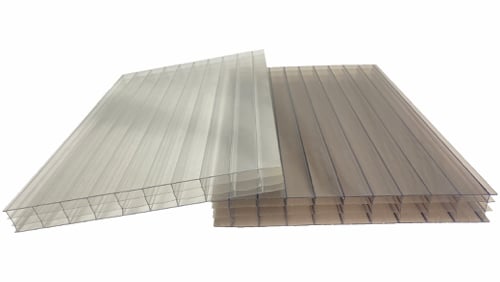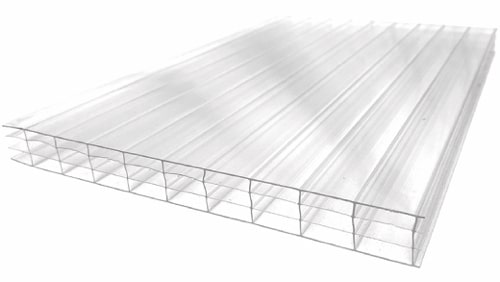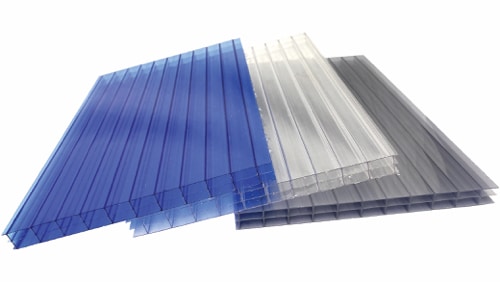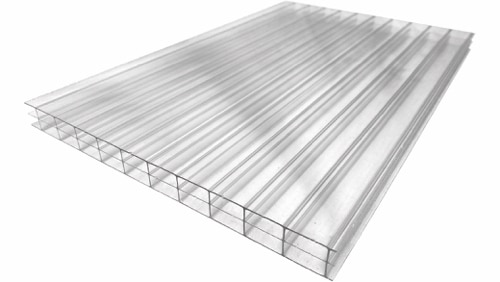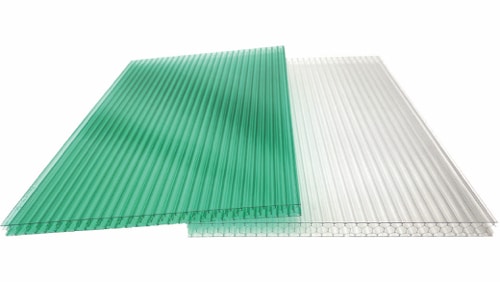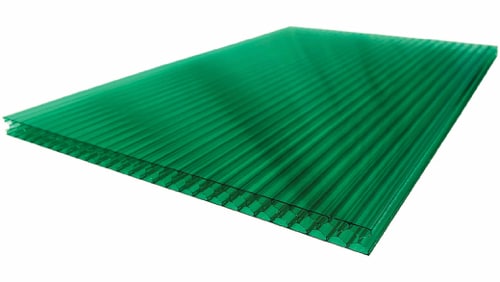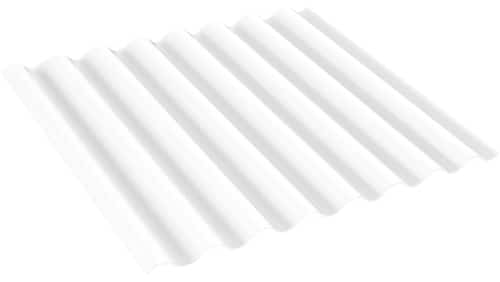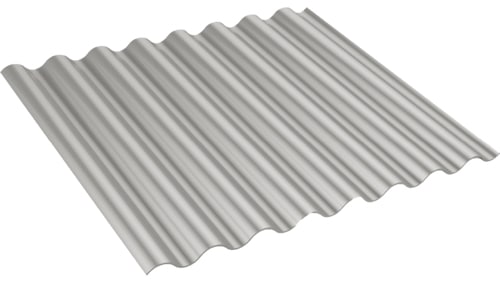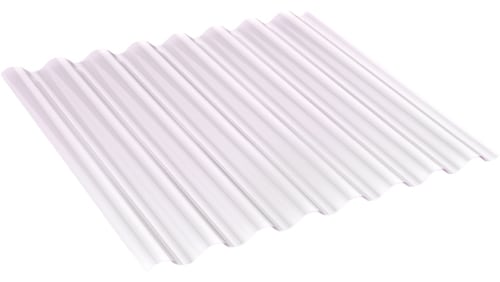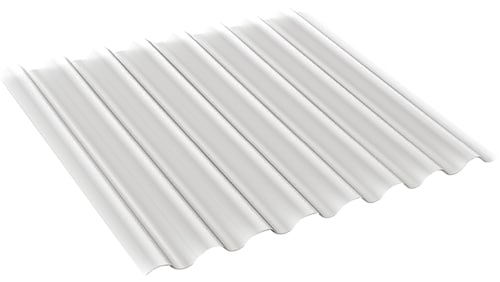Polycarbonate sheets for Greenhouse | Vulcan PC applications
How to choose the ideal polycarbonate sheets for greenhouse?
For people who do not know how to choose polycarbonate sheets for greenhouse, or even heard of the term greenhouse, they would have certainly heard of the greenhouse effect. The greenhouse effect is the process by which the Sun’s radiation travel towards the Earth, where some is reflected back to space, while the rest reaches the atmosphere and is absorbed by land and oceans, heating and keeping the Earth warm enough to sustain life.
The same goes for manmade greenhouses, which stems from the idea of growing plants in an environmentally controlled area. Polytunnel, or hoop greenhouses became more popular after the mid 20th century after wider polypropylene films became more commercially available.
Gutter-connected or multi-span greenhouses became more prevalent after the 90’s. Bays of greenhouses were interconnected by common walls or rows of support posts and are commonly covered with polycarbonate sheets or polyethylene films. But do you know how to choose the perfect polycarbonate sheets for greenhouse?
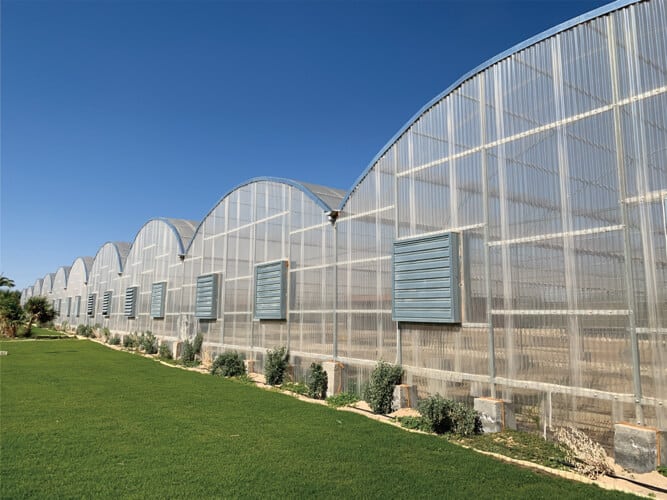
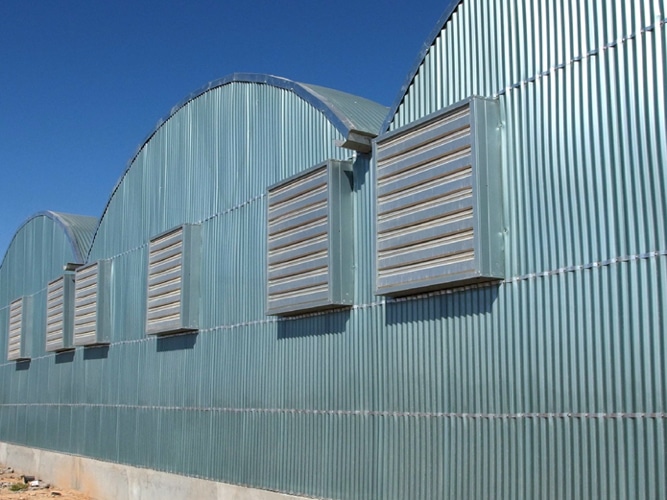
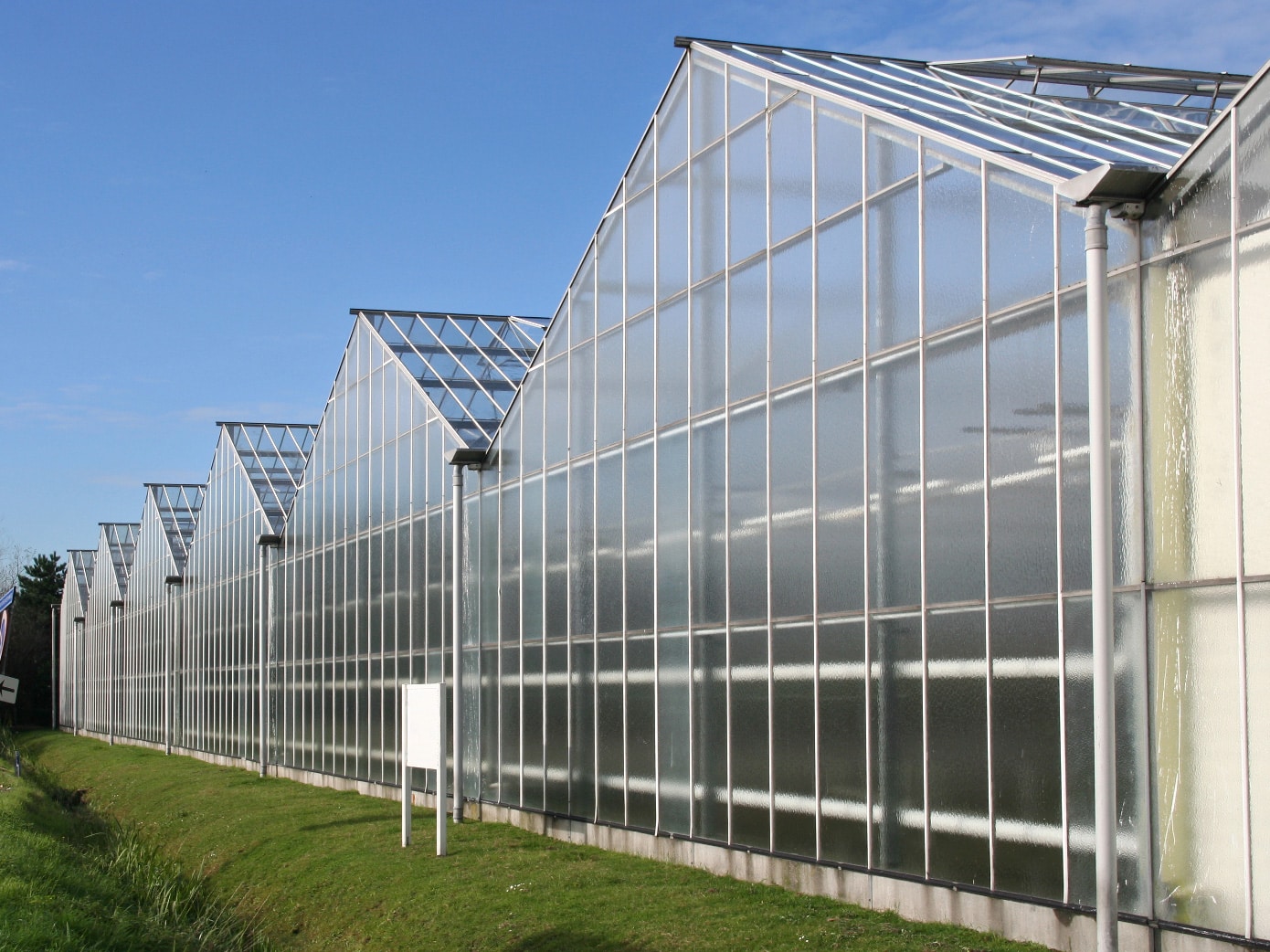
The Success Factor of Greenhouses
The main difference between a manmade greenhouse when compared to the Earth’s greenhouse effect is that a manmade greenhouse structures is not open to the atmosphere and therefore the covered area has to be either passively or actively regulated in order to keep temperature and humidity at an optimal level that promotes plant growth.
A successful greenhouse should be built in a way that has greater control over the existing environment and meets the desired conditions for optimal plant growth. Key components normally include temperature, ventilation, heating, cooling, lighting and shade, irrigation, and atmospheric humidity.
In terms of lighting and shade, VULCAN Polycarbonate sheets for greenhouse can definitely help. One of the main advantages of PC is how the material distorts light, creating what we called diffused light. Diffused light spreads evenly around the enclosed area as opposed to direct light, which can scorch or overheat plants.
Other than the natural high haze factor of polycarbonate, VULCAN Polycarbonate sheets for greenhouse can be chemically enhanced to include PAR selective properties, or add light diffusing and distribution functions while retaining high visible light transmission rates by additives.
For physical enhancements, VULCAN Corrugated Polycarbonate Sheets offer a variety of corrugated profile selections which all possess excellent reflective and refractive properties; the most suitable for greenhouse applications being our ROMA and Mini profiles.
VULCAN offers multiple solutions of Polycarbonate sheets for greenhouse roofing or wall cladding applications, along with our specialized fasteners and accessories for fixing polycarbonate sheets to steel or timber substrates.
Polycarbonate Corrugated vs. Flat Profiles for Greenhouse Applications
Now that you have understood the pros and cons of different glazing materials and have chosen VULCAN Polycarbonate sheets to build your greenhouse, the next step is to choose from the following options: Corrugated or Flat profiles.
Corrugated Polycarbonate Sheet Profiles are suitable for standalone or multi-span tunnel greenhouses, and require only light-duty building structures. They’re generally less expensive to construct as it requires fewer internal structures, and are normally made up of curved bows and simple purlins. The arched roof also creates flat spots where snow and ice can accumulate, which makes it more popular in tropical and subtropical regions.
Solid Flat Polycarbonate Profiles are more suited for A-frame type roofing greenhouses, which require medium to heavy building structures, and normally consist of welded or bolted trusses, designed to withstand high wind, hail, or snowy conditions. The added strength of the A-frame design can support systems such as boom irrigation, monorails, curtains among other equipment. An A-frame roof also offers good angles for capturing light during winter, a very important factor in northern climates. They are also less prone to drip condensation compared to an arched greenhouse structure.
Polycarbonate sheets for Greenhouse: The Do-it-All Solution
Customers who are looking for the best balance between light penetration, diffusion, with additional heat reduction and solar selective properties, can choose the VULCAN Pearly Series Polycarbonate sheets. With VULCAN Pearly, there is no need to add additional shade net coverings, which lowers the overall building and construction costs.
Areas with less sun exposure, stable climate and require maximum sunlight penetration.
As for places that are exposed to less sunlight, with lower than average Annual Sunlight Exposure (ASE), and require as much sunlight exposure as possible, we recommend VULCAN Valuview Series as your Polycarbonate sheets for greenhouse. VULCAN polycarbonate clear sheet offers maximum visible light penetration while retaining the original haze of PC, a property which glass or other glazing materials require additives to achieve.
Areas with ample sun exposure, stable climate, and requires soft diffused lighting conditions
If you are located in an climate stable area, with average Annual Sunlight Exposure (ASE), but wish for that additional indirect light penetration and diffusing properties, you should try VULCAN Valuview Opal. Valuview Opal Polycarbonate is not your typical white color additive just for aesthetic purposes. Our Opal master-batch includes light diffusers, similar to the material used on LED panels, which diffuses and disperses light evenly.
Please contact us for more information. We’ll be more than happy to provide more information and suggestions for you to find your perfect Polycarbonate sheets for greenhouse.
Further readings:
What is Polycarbonate & is Polycarbonate a Plastic?

